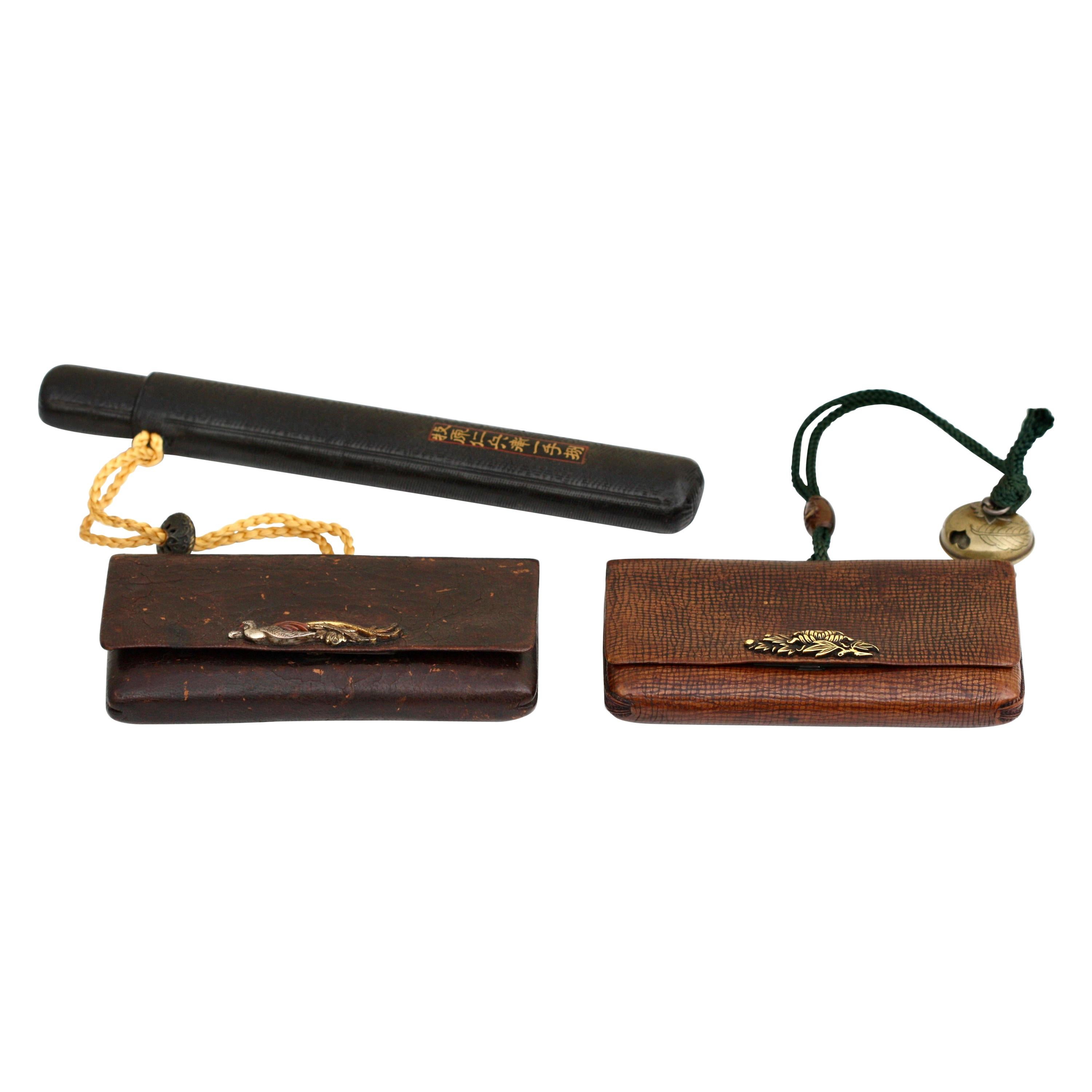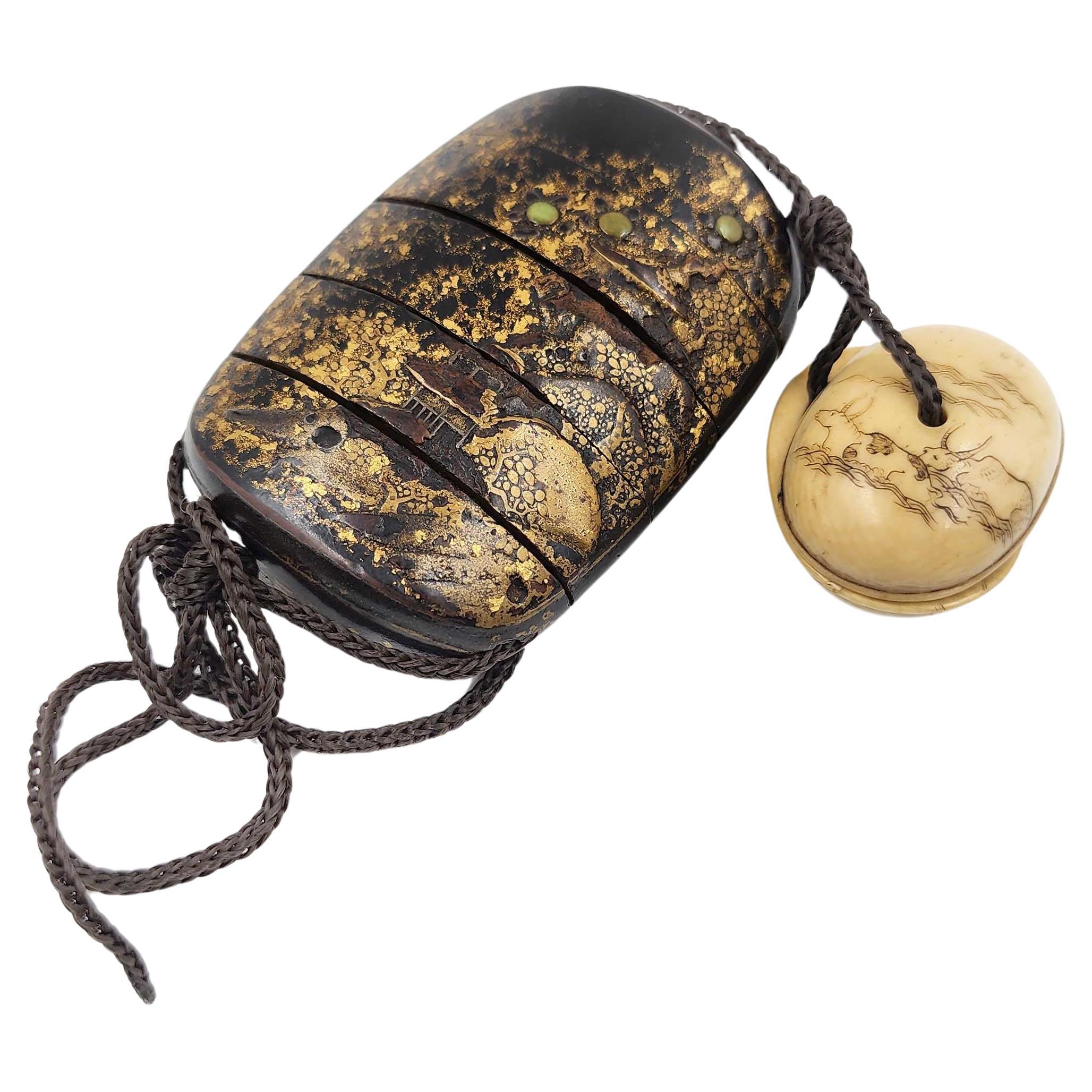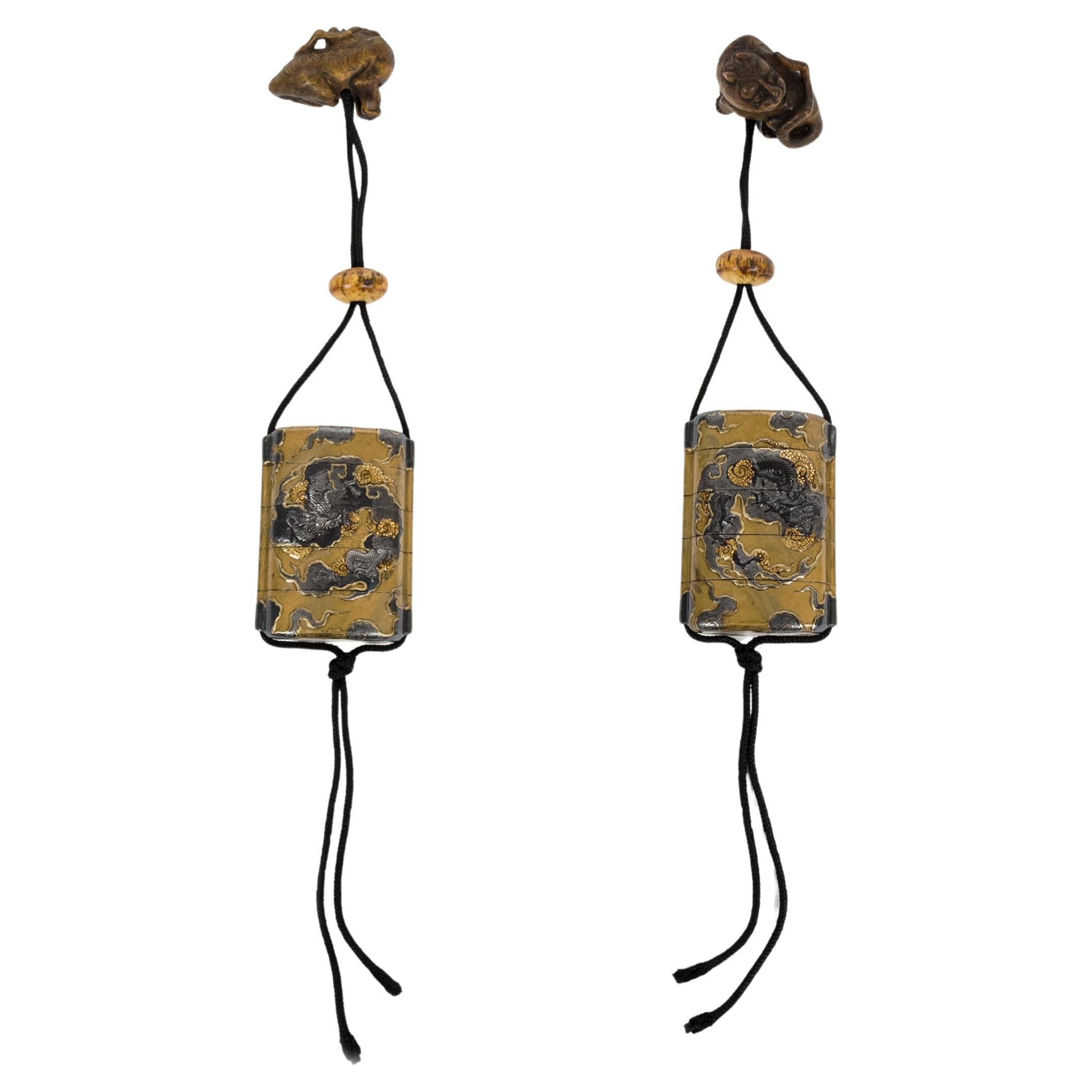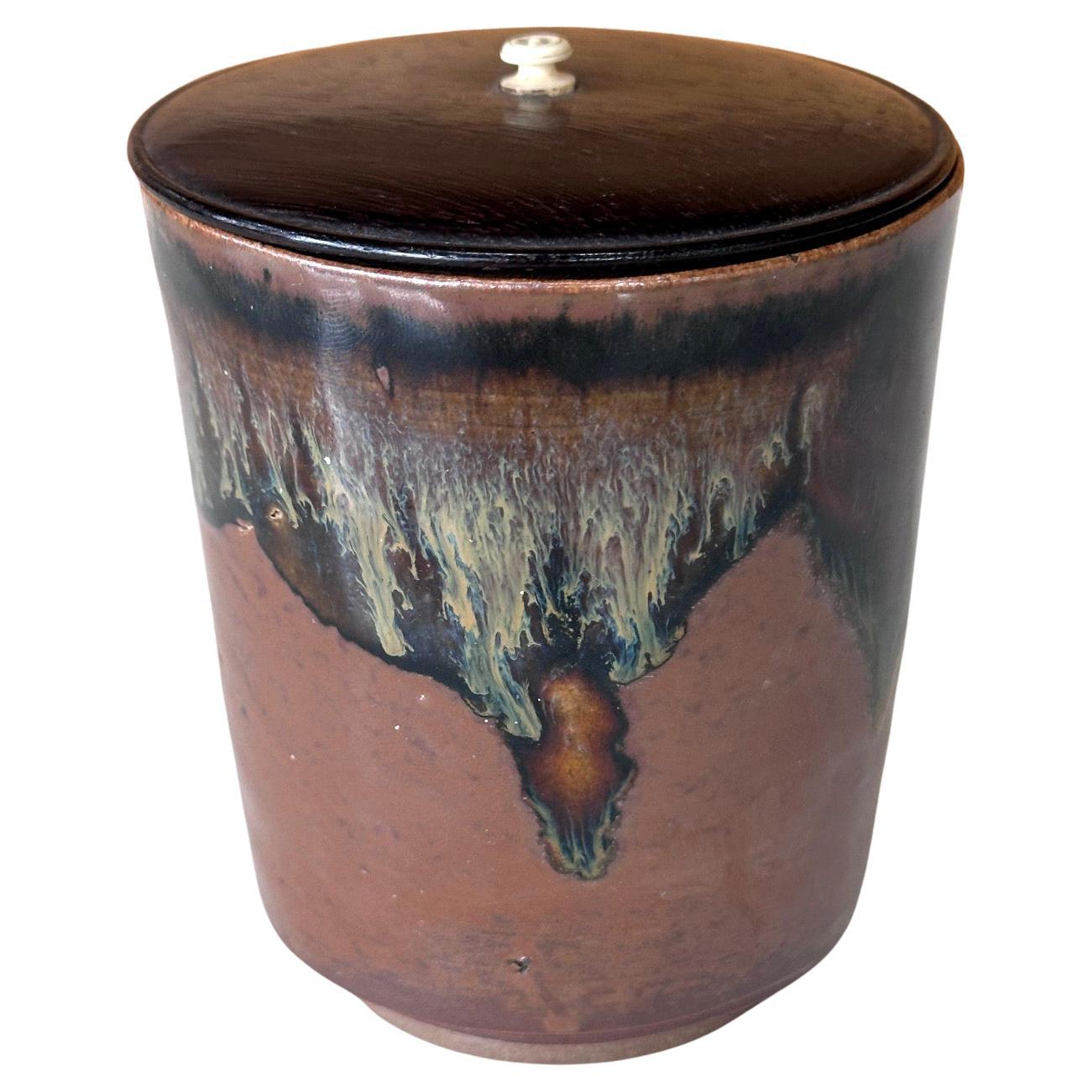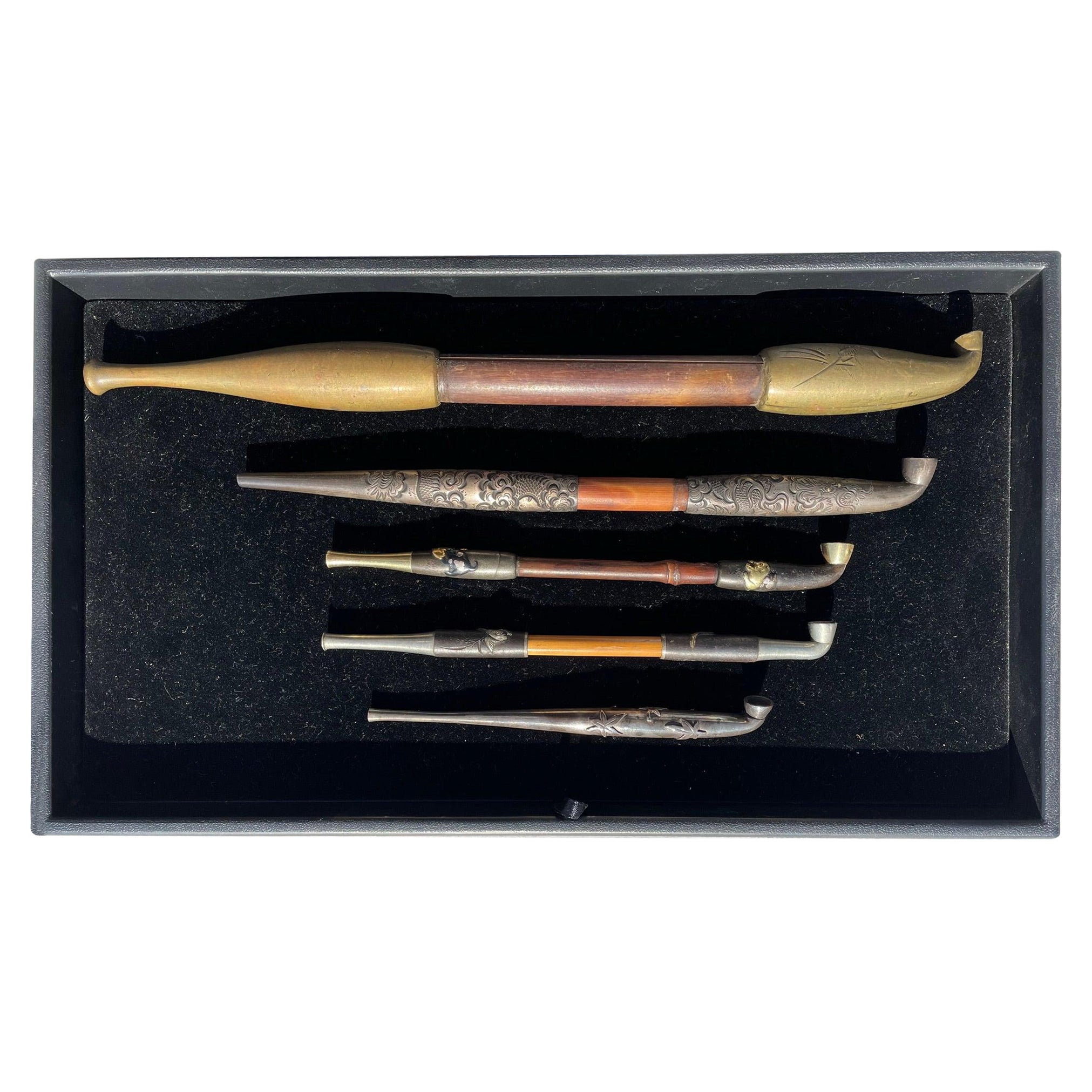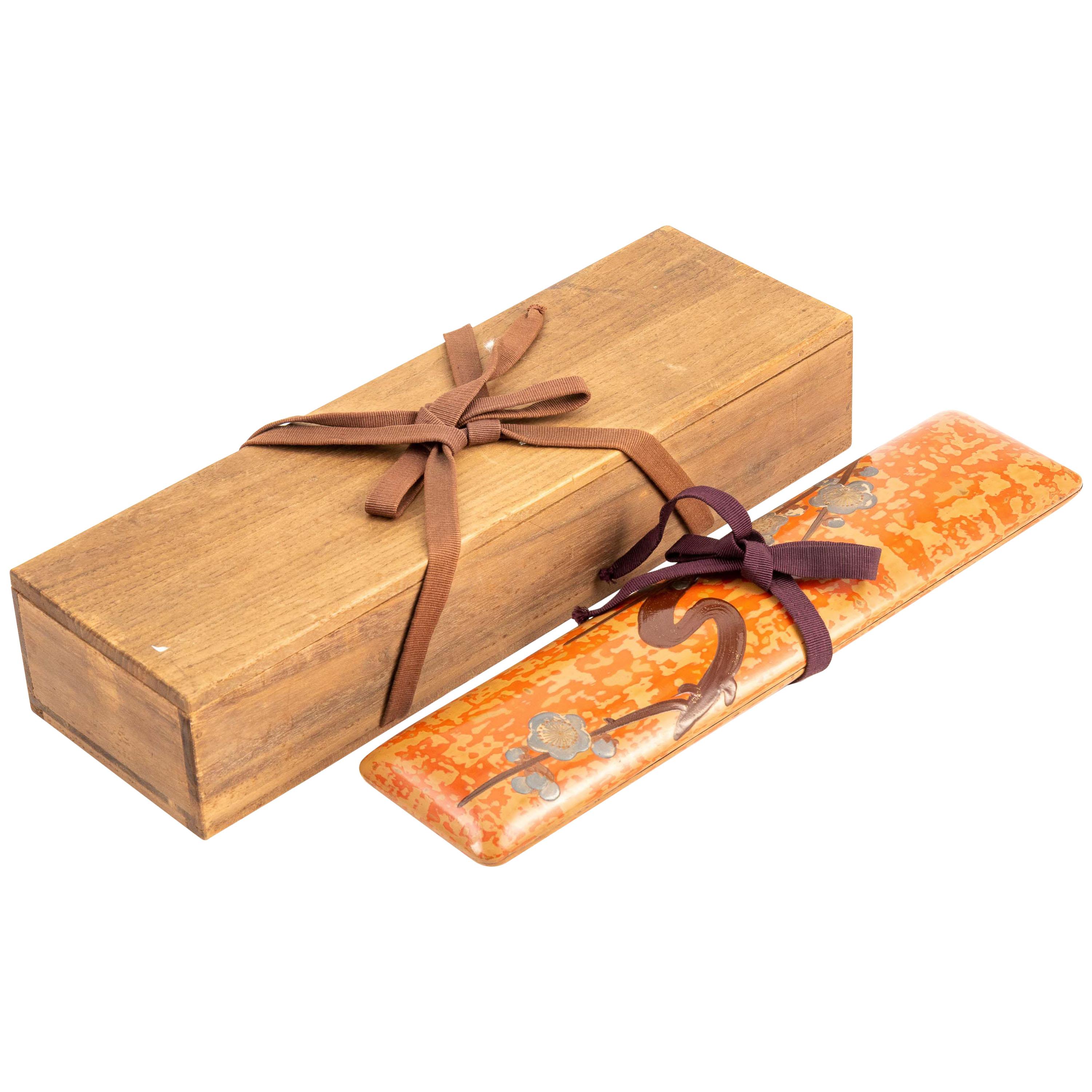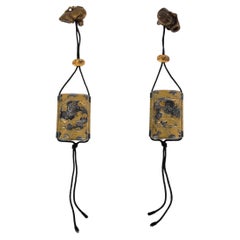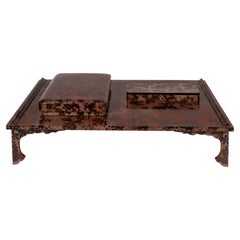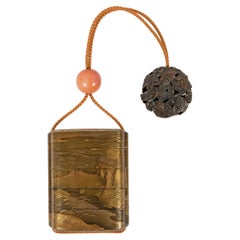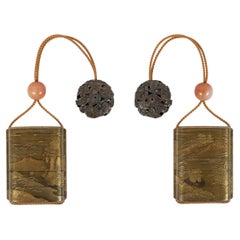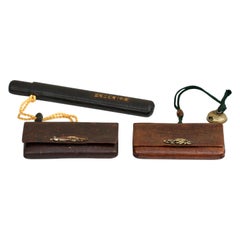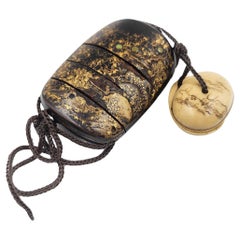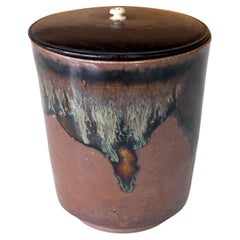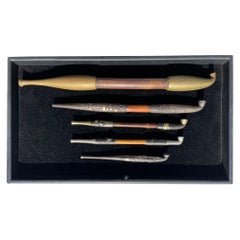Items Similar to Japanese Smoking Set 'Tabac-Ire'
Want more images or videos?
Request additional images or videos from the seller
1 of 6
Japanese Smoking Set 'Tabac-Ire'
$5,990.72
£4,459.70
€5,000
CA$8,205.79
A$9,126.63
CHF 4,765.64
MX$111,061.32
NOK 60,864.50
SEK 57,080.16
DKK 38,063.25
Shipping
Retrieving quote...The 1stDibs Promise:
Authenticity Guarantee,
Money-Back Guarantee,
24-Hour Cancellation
About the Item
Smoking set (tabako-ire) composed of a pipe (kiseru), a pipe case (kiseruzutsu) and a tabacco pouch (tonkotsu) for women linked to a netsuke.
Intended for a female use, the pipe is particularly thin. The pipe is made of bamboo with a dark brown varnish, while the mouthpiece decorated with flowers and the tip decorated with two butterflies are made of metal with a silver alloy. These are decorated by engraving and inlaying other colored metals in shades of orange and gray to obtain fine color highlights.
The pipe case and tobacco pouch are made of smooth, brown, matte cowhide. The material has been partially rubbed to obtain two different shades. The pipe case opens by the edge. The tobacco pouch is decorated with a metallic decoration (menuki) of two peonies whose pistils are made of coral colored hard stone.
Both parts are linked to a netsuke of kagamibuta type, made of two parts: a brass plate decorated with two cranes and an ivory bowl. They are connected using the ojime made of copper and hard stone, producing a clever recall of color with the stones of the tobacco pouch and the metal inlays on the pipe.
In Japan, tobacco is consumed by both men and women. In his book Around the World on a Bicycle (London, 1888), Thomas Stevens describes this practice: “The girls who wait in the yadoya and teahouses store their tobacco in the large pockets of their sleeves, their pipes sometimes tucked into their scarves or belts, sometimes tucked into the back of their hair”. Our smoking kit was made to be worn at the belt thanks to the netsuke.
Japan – Meiji era (1868-1912), second half of the 19th century
Measures: Pipe (kiseru): length 7.1 in. (18 cm) – width 0.4 in. (1 cm)
Pipe case (kiseruzutsu): lenght 8.5 in. (21.5 cm) – width 1.4 in. (3.6 cm)
Tabacco pouch (tonkotsu): lenght 4.7 in. (12 cm) – width 29.5 in. (7.5 cm)
Netsuke: diameter 1.7 in. (4.5 cm)
Ojime: diameter 0.7 in. (1.7 cm).
- Dimensions:Height: 2 in (5.08 cm)Width: 12 in (30.48 cm)Depth: 7.5 in (19.05 cm)
- Materials and Techniques:
- Place of Origin:
- Period:
- Date of Manufacture:1868-1912
- Condition:
- Seller Location:PARIS, FR
- Reference Number:Seller: 2022-10521stDibs: LU8311233527552
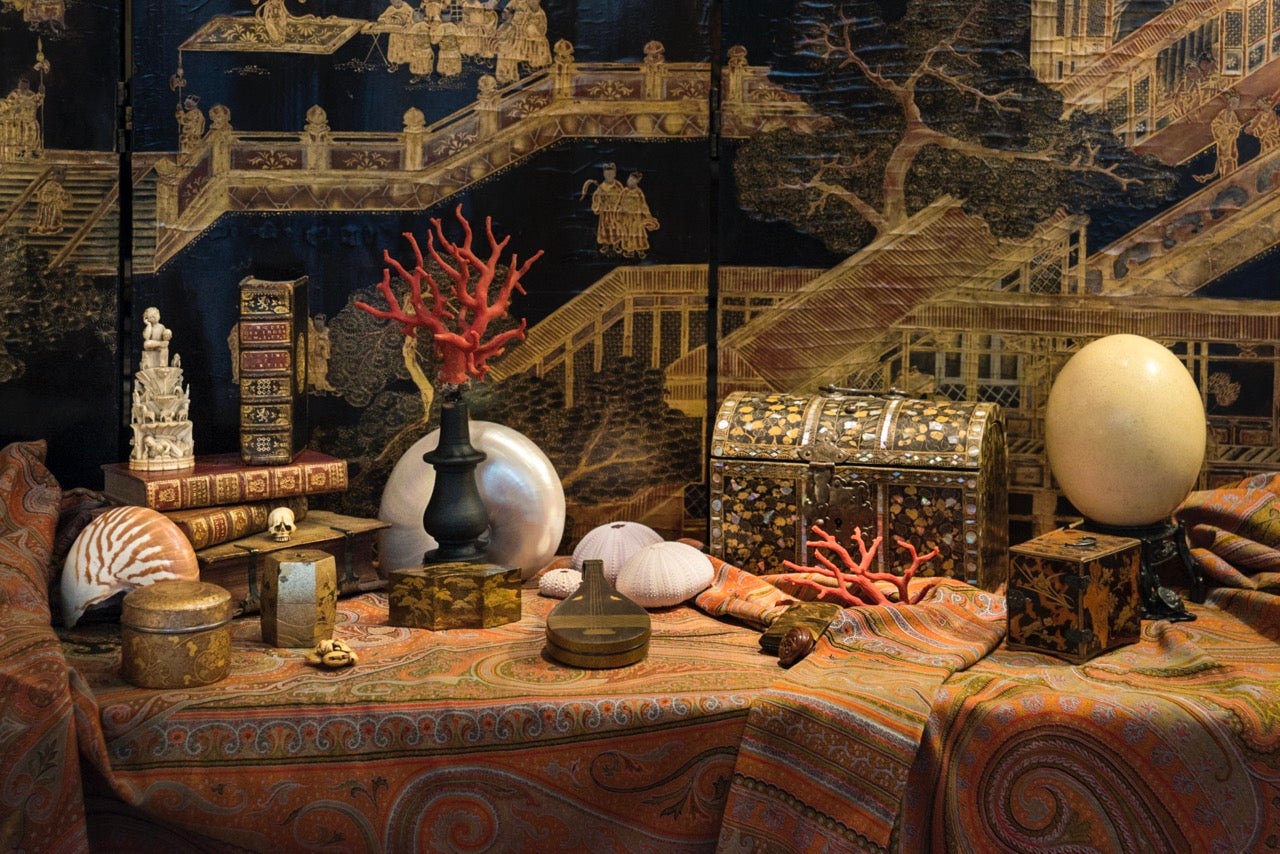
About the Seller
No Reviews Yet
Vetted Professional Seller
Every seller passes strict standards for authenticity and reliability
Established in 2013
1stDibs seller since 2023
Typical response time: Several days
- ShippingRetrieving quote...Shipping from: PARIS, France
- Return Policy
Authenticity Guarantee
In the unlikely event there’s an issue with an item’s authenticity, contact us within 1 year for a full refund. DetailsMoney-Back Guarantee
If your item is not as described, is damaged in transit, or does not arrive, contact us within 7 days for a full refund. Details24-Hour Cancellation
You have a 24-hour grace period in which to reconsider your purchase, with no questions asked.Vetted Professional Sellers
Our world-class sellers must adhere to strict standards for service and quality, maintaining the integrity of our listings.Price-Match Guarantee
If you find that a seller listed the same item for a lower price elsewhere, we’ll match it.Trusted Global Delivery
Our best-in-class carrier network provides specialized shipping options worldwide, including custom delivery.More From This Seller
View AllInro Dragon
Located in PARIS, FR
Beautifull inro of six compartments made of black gold, silver and tin lacquer,
representing a dragon on each side, surrounded by black and silver clouds, the inside
is made of nas...
Category
Antique Early 19th Century Japanese Japonisme Lacquer
Materials
Lacquer
$11,981
Japanese writting set in waqasa lacquer including bundai ryoshibako and fudebako
Located in PARIS, FR
Set of bundai, ryōshibako and fudebako in wakasa lacquer with an old rose background and black traditional Japanese patterns.
The saya pattern (or sayagata) is composed by Chinese svastikas. This symbol linked to Buddhism, mean intelligence, power and peace. It is a good omen sign.
The kanoko pattern reminds stains on fawn back.
The sakura (cherry blossom) pattern is emblematic of Japan. The blossoming in a short time marks spring beginning and is a symbol of renewal and ephemeral beauty.
There are also traces of calligraphy brush, in reference to the function of the objects.
Bundai is a low table used to put books or scrolls and, later, to write.
Rectangular ryōshibako (letter and document box) with a slightly domed
Fudebako (pencil case) of rectangular format very narrow in its length with two rounded corners, flat cover.
Wakasa lacquerware...
Category
Early 20th Century Japanese Taisho Lacquer
Materials
Lacquer
Japanese inro of the edo period adorned with a landscape houses near a lake
Located in PARIS, FR
Inrō with four gold lacquer compartments, decorated with a lake landscape. Accompanied by a bronze ryusa manju.
Small boxes formed of compartments that fit one on top of the other, i...
Category
Antique Late 18th Century Japanese Edo Lacquer
Materials
Gold
Gold Lacquer Inro Decorated with a Lake Landscape
Located in PARIS, FR
Inro with four gold lacquer boxes, decorated with a lake landscape. Accompanied by a bronze ryusa manju.
Small boxes formed of compartments that fit one on top of the other, inro (? ?) are traditional Japanese clothing...
Category
Antique Mid-19th Century Lacquer
Materials
Lacquer
Japanese lacquered Cherry Tree Kobako
Located in PARIS, FR
Kobako in nashiji lacquer of square shape with a hira maki-e décor of a blossoming
cherry tree. Both of the four sides are adorned with golden lacquer cherry flowers,
represented i...
Category
Antique 19th Century Japanese Lacquer
Materials
Lacquer
Wakasa-Nuri Lacquer Bundai, Ryoshobako, Fubako Set
Located in PARIS, FR
Set of bundai, ryoshibako and fudebako in wakasa lacquer with an old rose background and black traditional Japanese patterns.
The saya pattern (or sayagata) is composed by Chinese svastikas. This symbol linked to Buddhism, mean intelligence, power and peace. It is a good omen sign.
The kanoko pattern reminds stains on fawn back.
The sakura (cherry blossom) pattern is emblematic of Japan. The blossoming in a short time marks spring beginning and is a symbol of renewal and ephemeral beauty.
There are also traces of calligraphy brush, in reference to the function of the objects.
Bundai is a low table used to put books or scrolls and, later, to write.
Rectangular ryoshibako (letter and document box) with a slightly domed
Fudebako (pencil case) of rectangular format very narrow in its length with two rounded corners, flat cover.
Wakasa lacquerware...
Category
Early 20th Century Japanese Lacquer
Materials
Lacquer
You May Also Like
Three Antique Japanese Items
Located in West Palm Beach, FL
Three Antique Japanese Items
1)
An antique Japanese tabako-ire' with hand tooled gilded kane mono of fuji chrysanthemum. Bronze and shakudo oj...
Category
Antique 1880s Antiquities
Materials
Wood
Traditional Japanese Inro box with five compartments
Located in Autonomous City Buenos Aires, CABA
Traditional Japanese Inro Box with Five Compartments
Traditional Japanese inro box with five compartments. Classic design with dark lacquer and gold ...
Category
20th Century Japanese Japonisme Antiquities
Materials
Wood
Rare Antique Japanese Ceramic Takatori Ware Hoso Mizusashi
Located in Atlanta, GA
This small ceramic container from Edo period Japan circa 1800s was made in the Takatori Kilns in Fukuoka Prefecture. This type of small, tall jar with a lid was specifically created ...
Category
Antique 19th Century Japanese Edo Ceramics
Materials
Ceramic
Japanese Connoisseurs Collection Fine Antique Smoking Pipes Kiseru
Located in South Burlington, VT
Rare one-of-a-kind collection
Japanese Connoisseurs Collection of Five (5) Fine Antique Smoking Pipes, Kiseru.
You dont need to be a conn...
Category
Antique 19th Century Japanese Meiji Scholar's Objects
Materials
Bronze, Gold, Sterling Silver, Copper
$1,440 Sale Price / set
80% Off
Vintage Japanese Wakasa Lacquer Folder for Poems and Paintings
Located in Prahran, Victoria
A Japanese Wakasa lacquer folder to carry poems and paintings. It has a silver raised Togidashi maki-e design of cherry blossom, created by lay...
Category
Vintage 1960s Japanese Lacquer
Materials
Silk, Wood
Meji's Period Inro Box. Japan, 19th Century.
Located in Madrid, ES
Inro is an ancient traditional Japanese box used to carry and store small items such as tobacco, money, paintbrushes, and other objects. The...
Category
Antique 19th Century Japanese Japonisme Decorative Boxes
Materials
Wood, Lacquer
More Ways To Browse
Japanese Stone Art
Japanese Butterfly
Japanese Metal Flower
Two Cranes
Japanese Ivory
Japanese Plate Sets
Asian Men
Japanese Metal Plate
Japanese Coral
Japanese Butterfly Art
Japanese Inlay
Antique Japanese Book
Orange Japanese Antique
Japanese Peony
Antique Japanese Stone
Japanese Crane Art
Japanese Art Of Cranes
Antique Bone Plates
